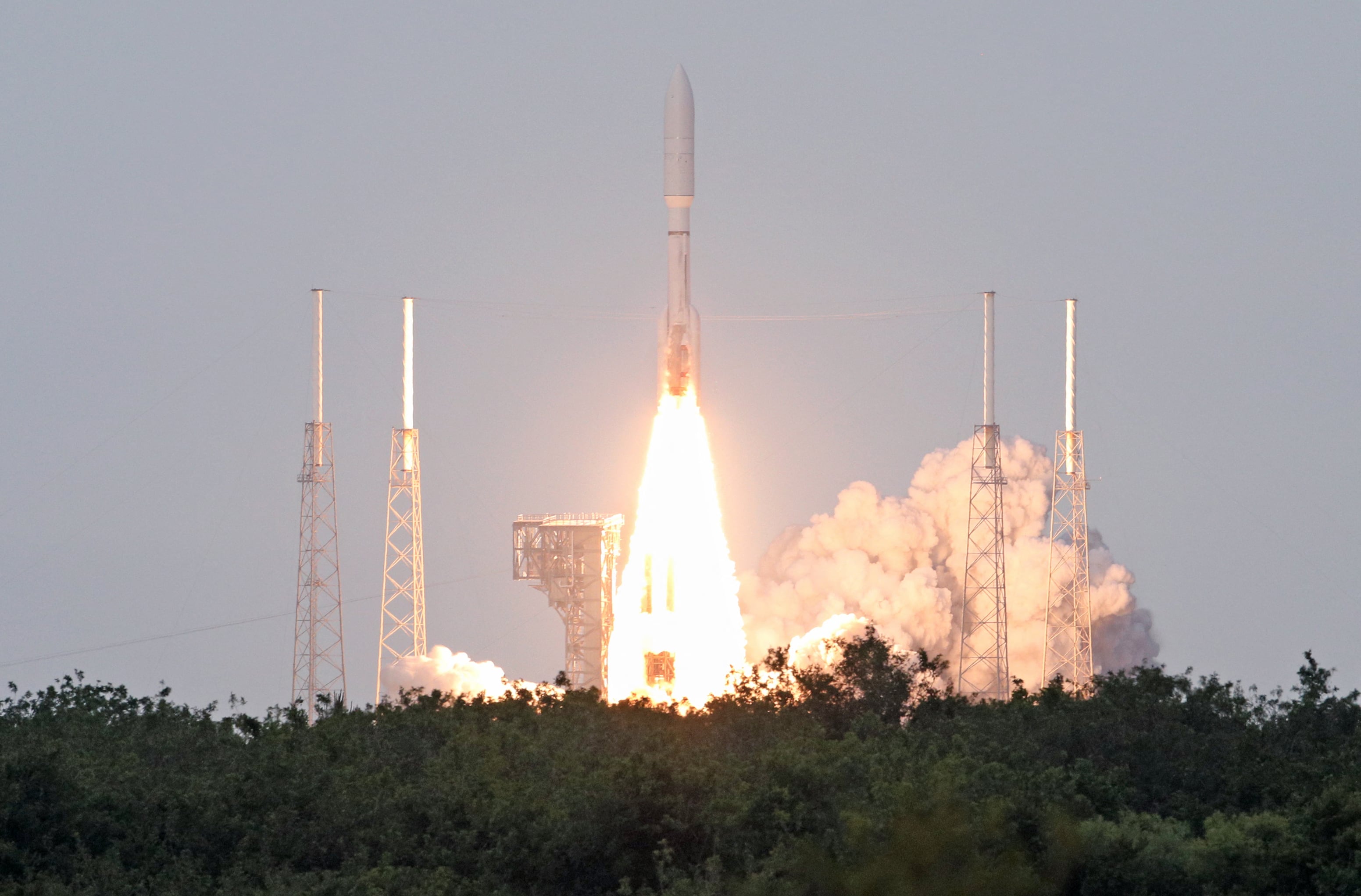After 15 years of war in a permissive environment against a technologically inferior adversary, the U.S. military now stands at a crossroads.
So-called near-peer adversaries have observed the U.S. and are making investments in new technologies and concepts to disrupt the U.S. in future conflict. This combined with rapid technological innovations in the commercial sector such as cyber and small unmanned vehicles has the military questioning its operating procedures.
The armed forces are beginning to adopt a cross- or multi-domain approach on the battlefield. The Army is developing a multi-domain battle white paper — in concert with the Marine Corps — which has been the primary focus of the 2017 Global Force Symposium hosted by the Association of the U.S. Army in Huntsville, Alabama.
The multi-domain battle
Initially discussed at the annual fall AUSA gathering, Gen. David Perkins, commander of Training and Doctrine Command — flanked by members of the joint force during his March 13 panel discussion — unveiled the Army's effort to develop a multi-domain battle concept.
The Army's multi-domain white paper has the potential to provide a framework to design the ground component concept of the future joint force that will fight and win the nation's wars, according to a video shown as part of Perkins' presentation.
The video boasted that multi-domain battle will give joint force commanders a level of cross-domain integration never before achieved, from the tactical to the operational and strategic level, while also integrating capabilities across multiple domains to create windows of superiority.
The threat
Some potential adversaries have deployed elements of multi-domain battle, presenting the key to winning in a complex world being full integration of complex capabilities simultaneously across multiple domains as, Perkins's video noted.
While the nature of war is unchanging, noted the character of war is — social media, cyber operations, information operations, UAS on the battlefield from all sides — according to Maj. Gen. Bo Dyess, acting director of the Army Capabilities Integration Center of TRADOC, said during a panel discussion March 13.
During his Monday panel discussion at the AUSA conference, Dyess provided four key insights on how the future battlefield will look:
- The Army is going to be contested in all domains.
- The future battlefield will be increasingly lethal, exemplified by testimony to the fact that the Army is increasingly outmanned, outgunned and outranged — both in capability and capacity.
- The future battlefield will be increasingly complex. This includes dense urban environments.
- The Army will have to fight degraded as a result of the all-domain contest.
Moreover, Perkins added that when taking a look at current and potential adversaries, the Army has found they mainly have three goals in offensively targeting United States interests:
- They try to fracture armed forces synchronization and air-land battlefield successes.
- They want to keep the U.S. and its coalition out of their area of operation — what is called in some circles as anti-access/area denial.
- Adversaries want to suppress the maneuverability of U.S. and coalition partners.
According to Perkins, once the U.S. and its allies can maneuver, they become very good at improving their numerical and positional advantage. Generally the U.S. is at a numeric disadvantage, he added, but it can get to a positional advantage and temporary numerical advantage to turn the table on its adversaries.
The military's efforts
Over the next year, multi-domain battle will be developed by and include an integrated concept development team through an intense process designed to question, break and strengthen the resulting concept, according to Perkins’ video.
Dyess also outlined the problem statement the Army and TRADOC is trying to assess: that U.S. ground combat forces as part of a joint and coalition organization are not sufficiently trained, organized, equipped or postured to deter or defeat near-peer enemies.
As such, he outlined three components for a solution in multi-domain battle, as laid out in the white paper:
- Establish, create and exploit temporary points of advantage.
- Restore capability imbalance and build flexible and resilient formations in the joint force.
- Alter force posture to enhance deterrence. If deterrence works, the U.S. won’t have experience the previously described future battlefield environment.
From a joint perspective, Brig. Gen. Julian Alford, commanding general of the Marine Corps Warfighting Laboratory, noted that part of the problem is creating a better war fighter-on-war fighter advantage.
Alford said that same day during a panel discussion that for the Marines Corps, the individual Marine in a small unit theater is the focus. "That’s our niche," he said.
However, in the last 15 years, the U.S. military has been engaged in a fair fight at that level, something the services despise.
"How do you change a fair fight?" Alford asked. "Maybe that’s the third offset — when the individual soldier, Marine or [special operations force] operator comes up against our enemy and we crush them, we overmatch, we are that much better than them."
But the force is not at that point today, he added.
Mark Pomerleau is a reporter for C4ISRNET, covering information warfare and cyberspace.








